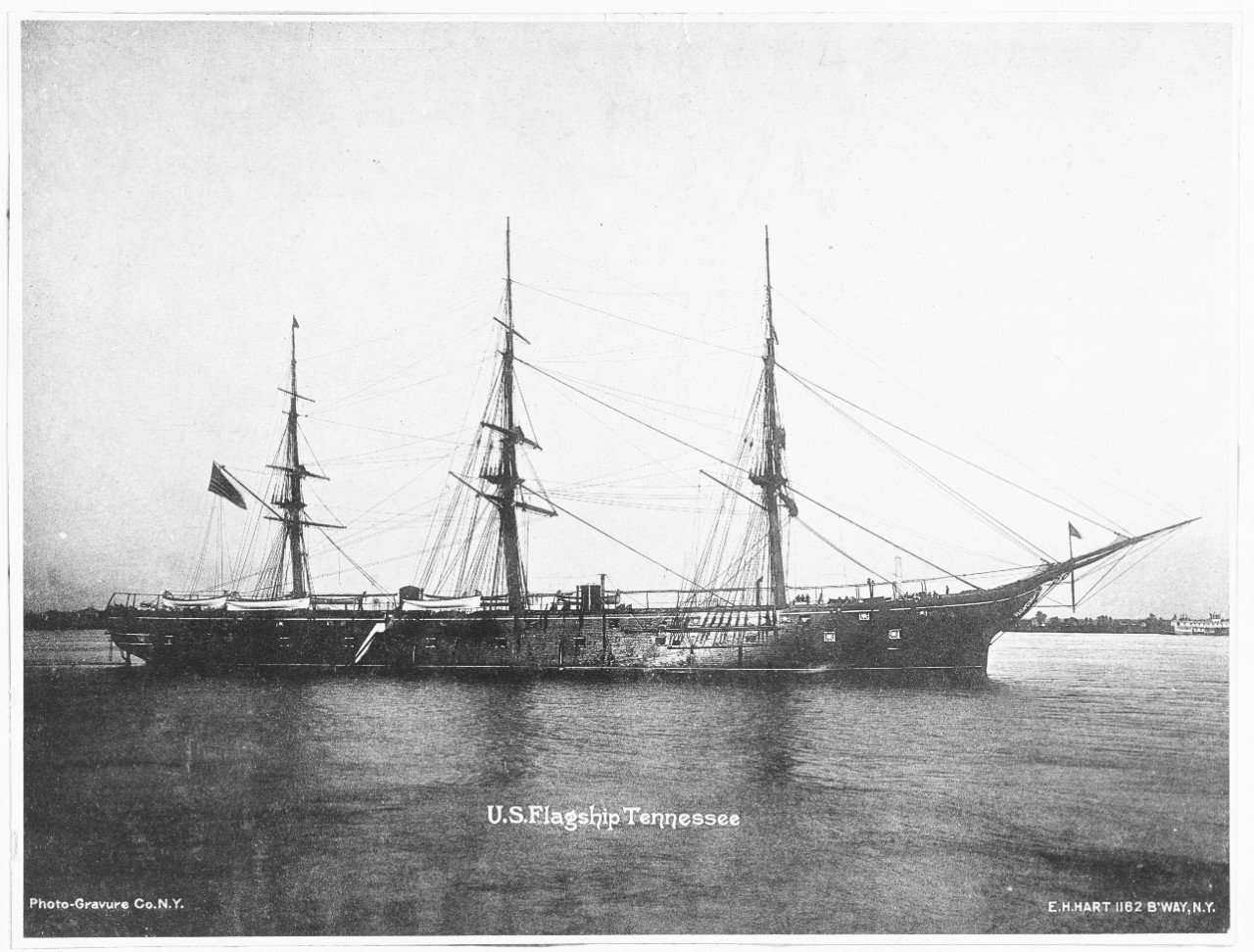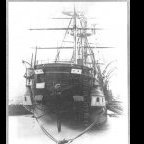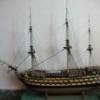MORE HANDBOOKS ARE ON THEIR WAY! We will let you know when they get here.
×
-
Posts
6,244 -
Joined
-
Last visited
Reputation Activity
-
 Keith Black got a reaction from LJP in Sternwheeler From the Susquehanna River's Hard Coal Navy by Keith Black - 1:120 Scale
Keith Black got a reaction from LJP in Sternwheeler From the Susquehanna River's Hard Coal Navy by Keith Black - 1:120 Scale
I got a few items's checked off the list this past week.
Added the stair railing.
The stair railing was the moat time consuming as it was mostly trial and error
Added control lever and steam pressure gauge in the pilothouse and it's now permanently attached.
Added the water tank, exhaust pipe, steam whistle, drive shaft (as much as can be seen) and step over
Thank you to everyone for the likes and for your support, I appreciate it so very much.
Keith
-
 Keith Black got a reaction from FriedClams in Sternwheeler From the Susquehanna River's Hard Coal Navy by Keith Black - 1:120 Scale
Keith Black got a reaction from FriedClams in Sternwheeler From the Susquehanna River's Hard Coal Navy by Keith Black - 1:120 Scale
Thank you to everyone for the comments and likes.
I'm starting on unknown port side items.
We know the boat had a generator because of the lights. I'm going to make my life easier by electrifying the stocker and the water pump. The single phase generator is enclosed in the port side area of the engine room and will not be seen.
I was able to find images of a pump and motor for the stoker. The motor for the pump will be generic from the time period. You guys know the drill, it's time to pull out the bit boxes.
This a Leland motor.
This is a heavy duty Myers pump. I really like the looks of this pump, it looks like it fits the time period and the boat. I can't wait to try making this jewel.
The water tank on top of the port side engine will be a three foot high by five foot diameter tank holding 440 gallows and weighing 3,500 pounds. The pump will pump into the tank and the tank will gravity feed the boiler.
Thank you for your support.
Keith
-
 Keith Black got a reaction from FriedClams in Sternwheeler From the Susquehanna River's Hard Coal Navy by Keith Black - 1:120 Scale
Keith Black got a reaction from FriedClams in Sternwheeler From the Susquehanna River's Hard Coal Navy by Keith Black - 1:120 Scale
Thank you very much, Kurt.
At some point my fingertips aren't going to be able to continue working at this scale and I'll have to go to a larger scale. I'm seriously looking to move up to HO scale on my next build.
Thank you very much, Bob.
I'm a couple of months away from finishing this boat but I want to build an accompanying barge under the same build log which should take another couple of months, so we're looking at being done with this log about Christmas time. I then need to get back to the Tennessee and finish her while I'm still able.
-
 Keith Black got a reaction from FriedClams in Sternwheeler From the Susquehanna River's Hard Coal Navy by Keith Black - 1:120 Scale
Keith Black got a reaction from FriedClams in Sternwheeler From the Susquehanna River's Hard Coal Navy by Keith Black - 1:120 Scale
Thank you to each of you for the comments and the likes.
I'm calling the steam engine is done. I could add the reversing leavers but they would be on the starboard side and wouldn't be visible with the engine room attached. The engine can only be really viewed from the port side and with the reversing levers on the starboard, it's work that to me is somewhat pointless.
The crank is straight, there was no way I could make journals and get the nine eye pins (rods and bearings) to align. That task was tough enough with the crank being straight!
I get a real kick taking my boxes of bits and making something mechanical. The engine's final dimensions are engine body, 0.90 L x 0.41 H X 0.31 W inches. Flywheel to tail shaft is 1.15 inches. It took 64 individual pieces to make the engine.
There's no mistaking it's an engine even though little can be see when surrounded by the engine room.
It seems it's like this is becoming my signature, build an engine and bury it.
Thank you for your support and for being part of the journey.
Keith
-
 Keith Black got a reaction from FriedClams in Sternwheeler From the Susquehanna River's Hard Coal Navy by Keith Black - 1:120 Scale
Keith Black got a reaction from FriedClams in Sternwheeler From the Susquehanna River's Hard Coal Navy by Keith Black - 1:120 Scale
While I'm marking up photos......
The only view to the port side is through the engine room's bow window. The arrow points to what I thought was a jack pump but there's no line to what would be a unseen pump. I don't have a clue, anyone what to hazard a guess?
-
 Keith Black got a reaction from FriedClams in Sternwheeler From the Susquehanna River's Hard Coal Navy by Keith Black - 1:120 Scale
Keith Black got a reaction from FriedClams in Sternwheeler From the Susquehanna River's Hard Coal Navy by Keith Black - 1:120 Scale
Thank you, Eberhard.
I don't think so, Phil. If it the engine had been a condensing/compound engine there wouldn't have been the need for an exhaust stack at all, just a pipe over the side. Note the exhaust pipe coming off the engine as seen through the engine room bow window.
-
 Keith Black got a reaction from FriedClams in Sternwheeler From the Susquehanna River's Hard Coal Navy by Keith Black - 1:120 Scale
Keith Black got a reaction from FriedClams in Sternwheeler From the Susquehanna River's Hard Coal Navy by Keith Black - 1:120 Scale
Thank you, Paul.
Thank you, Steve.
Those photos in my last post were bugging me so I took what look a little better. I had also wanted to include a top down photo of the three cylinder model.
When the engine is completed I'm going to ploy coat it due to machinery paint gloss, oil, and moisture. I think it will look more natural with poly coat than flat black.
-
 Keith Black got a reaction from FriedClams in Sternwheeler From the Susquehanna River's Hard Coal Navy by Keith Black - 1:120 Scale
Keith Black got a reaction from FriedClams in Sternwheeler From the Susquehanna River's Hard Coal Navy by Keith Black - 1:120 Scale
Thank you to everyone for the comments and likes.
There should be a steam engine in there somewhere.
In the heat of battle. All that mess working on a piece less that an inch long.
Cylinder heads and steam chest glued to plywood backing. I have a large work surface but invariably I work at the bottom edge of the table, that's why I have so many escapees.
The top end is done. Horrible photo, no more taking photos on a white background.
I'm pleased with the top end, hopefully I can get the bottom end to match. It took 31 pieces to make the top end. I was trying to hold the top end length to 0.70 inches but it came out to be 0.90 inches. This means the completed engine will be about 1.1 inches, to scale that makes the engine 11 feet in length. What a monster!
Thank you for your support and for following along.
Keith
-
 Keith Black got a reaction from FriedClams in Sternwheeler From the Susquehanna River's Hard Coal Navy by Keith Black - 1:120 Scale
Keith Black got a reaction from FriedClams in Sternwheeler From the Susquehanna River's Hard Coal Navy by Keith Black - 1:120 Scale
Thank you, Roel
The below photo is the best for showing the exhaust. As much as I tried talking myself into the engine being a triple expansion I couldn't because of this photo.
Thank you, Phil.
I have enough engine photos to move forward as they all look close to being the same. Finding mention of a special four cylinder marine non condensing engine allowed me to consider and make that engine. Good news, the engine build is going well. Hopefully I'll be able to post photos this evening.
-
 Keith Black got a reaction from gjdale in Sternwheeler From the Susquehanna River's Hard Coal Navy by Keith Black - 1:120 Scale
Keith Black got a reaction from gjdale in Sternwheeler From the Susquehanna River's Hard Coal Navy by Keith Black - 1:120 Scale
I got a few items's checked off the list this past week.
Added the stair railing.
The stair railing was the moat time consuming as it was mostly trial and error
Added control lever and steam pressure gauge in the pilothouse and it's now permanently attached.
Added the water tank, exhaust pipe, steam whistle, drive shaft (as much as can be seen) and step over
Thank you to everyone for the likes and for your support, I appreciate it so very much.
Keith
-
 Keith Black got a reaction from tmj in Sternwheeler From the Susquehanna River's Hard Coal Navy by Keith Black - 1:120 Scale
Keith Black got a reaction from tmj in Sternwheeler From the Susquehanna River's Hard Coal Navy by Keith Black - 1:120 Scale
I got a few items's checked off the list this past week.
Added the stair railing.
The stair railing was the moat time consuming as it was mostly trial and error
Added control lever and steam pressure gauge in the pilothouse and it's now permanently attached.
Added the water tank, exhaust pipe, steam whistle, drive shaft (as much as can be seen) and step over
Thank you to everyone for the likes and for your support, I appreciate it so very much.
Keith
-
 Keith Black got a reaction from yvesvidal in Sternwheeler From the Susquehanna River's Hard Coal Navy by Keith Black - 1:120 Scale
Keith Black got a reaction from yvesvidal in Sternwheeler From the Susquehanna River's Hard Coal Navy by Keith Black - 1:120 Scale
I got a few items's checked off the list this past week.
Added the stair railing.
The stair railing was the moat time consuming as it was mostly trial and error
Added control lever and steam pressure gauge in the pilothouse and it's now permanently attached.
Added the water tank, exhaust pipe, steam whistle, drive shaft (as much as can be seen) and step over
Thank you to everyone for the likes and for your support, I appreciate it so very much.
Keith
-
 Keith Black reacted to Coyote_6 in HMS Pegasus 1776 by Knocklouder - Amati/Victory Models - 1:64
Keith Black reacted to Coyote_6 in HMS Pegasus 1776 by Knocklouder - Amati/Victory Models - 1:64
Pegasus is looking very nice Bob. A fine ship indeed sir.
-
 Keith Black reacted to Knocklouder in HMS Pegasus 1776 by Knocklouder - Amati/Victory Models - 1:64
Keith Black reacted to Knocklouder in HMS Pegasus 1776 by Knocklouder - Amati/Victory Models - 1:64
Gunport lids are all painted and ready to install, later.lol. if it hangs off the ship I will surely knock it off, so I am just letting them dry then put them away.
The tiniest eyebolt I have and then tied on with a .o1 mm rope. Good enough for me.
I belive that was the last things I have to paint, not sure , but it is all rigging from here on . Oh yes I will repaint all swivel guns, as soon as I knock them all of, lol
Half of them are in the tin now.
The frist lid is glued in but the rest I will attempt latter.
So with that , on to the shrouds, all the lines are served and ready to start cutting it up to see If I made enough, lower Mizzen are on and the main lower are cut , it going to be close , but it really doesn't matter because I have to set up the serving machine for the stays, main stay is 1.03 mm, I also need to make up some 1.0 mm and some more .75 mm. I don't serv any lines under .75 mm , it can be done just for me I cant see the difference, so its something I will just skip.
I remember making .5 mm for my Duchess of the and the Astrolabe 1812. The .5 mm I get from Amati is just as good.
So I am going to install the lower shrouds then it time to start making a list of lines I need and how much 🙃.
I just read that my serving machine is Not intended to be motorized, lol to bad she's getting hooked up to the cordless drill 😅 🤣. I know where to by a new one,
And I will if I have to, I like serving lines, to me it part of modeling, my models may not be the prettiest 😅 but I am just learning how. If I may say the Pegasus is turning out to be a fine ship, I am looking forward to trying new things that I see on the logs here on MSW. Thanks everyone for all your help.
Knocklouder 😁
-
 Keith Black reacted to Coyote_6 in Prince de Neufchatel by Coyote_6 – Constructo – 1/58 scale - American privateer
Keith Black reacted to Coyote_6 in Prince de Neufchatel by Coyote_6 – Constructo – 1/58 scale - American privateer
Some days things just go... slow.
Having never done a chainplate, well, let's just say this has taken longer than it should have. I had initially thought to do the chain link style, but the Smithsonian plans pretty clearly show plates, so here we are.
Much thought on blackening the plates, but this build seems to highlight natural finishes so the brass remains. It is what it is I guess.
On deck, Mister Nash has hung the ship's bell and added the bell rope. Hopefully it will be able to stay there when all the rigging is completed. 🤔
Well done Mister Nash!
Thanks for checking in. Interested in any thoughts as always!
-
 Keith Black reacted to Paul Le Wol in Steam Schooner Wapama 1915 by Paul Le Wol - Scale 1/72 = From Plans Drawn By Don Birkholtz Sr.
Keith Black reacted to Paul Le Wol in Steam Schooner Wapama 1915 by Paul Le Wol - Scale 1/72 = From Plans Drawn By Don Birkholtz Sr.
Gary, good to hear from you!. Thank you very much.
-
 Keith Black reacted to FriedClams in Steam Schooner Wapama 1915 by Paul Le Wol - Scale 1/72 = From Plans Drawn By Don Birkholtz Sr.
Keith Black reacted to FriedClams in Steam Schooner Wapama 1915 by Paul Le Wol - Scale 1/72 = From Plans Drawn By Don Birkholtz Sr.
Extremely fine work, Paul. Your model is progressing nicely with each new step so thoughtfully executed.
Gary
-
 Keith Black reacted to wefalck in Pomeranian Rahschlup 1846 by wefalck – 1/160 scale – single-masted Baltic trading vessel
Keith Black reacted to wefalck in Pomeranian Rahschlup 1846 by wefalck – 1/160 scale – single-masted Baltic trading vessel
Johann, Costé has a number of tables at the end that give the proportions of different parts. However, they are mainly useful, I think, when you have to reconstruct a sail-plan from scratch. In my case, I had the original sail-plan and spar dimensions. In fact, much of the literature is concerned with the preferable proportions of the spars, which in my case is given in sufficient detail.
For the dimensioning of the standing and running rigging I mainly worked from Biddlecombe, but compared his data with those from the other sources.
-
 Keith Black reacted to archjofo in Pomeranian Rahschlup 1846 by wefalck – 1/160 scale – single-masted Baltic trading vessel
Keith Black reacted to archjofo in Pomeranian Rahschlup 1846 by wefalck – 1/160 scale – single-masted Baltic trading vessel
Hello Eberhard,
I was a little surprised when I read that you also cited F. A. Coste as a source.
But, as always, excellent research.
-
 Keith Black reacted to JacquesCousteau in Pomeranian Rahschlup 1846 by wefalck – 1/160 scale – single-masted Baltic trading vessel
Keith Black reacted to JacquesCousteau in Pomeranian Rahschlup 1846 by wefalck – 1/160 scale – single-masted Baltic trading vessel
Nice research work!
-
 Keith Black reacted to wefalck in Pomeranian Rahschlup 1846 by wefalck – 1/160 scale – single-masted Baltic trading vessel
Keith Black reacted to wefalck in Pomeranian Rahschlup 1846 by wefalck – 1/160 scale – single-masted Baltic trading vessel
Thank you very much for the continued interest in this project 👍🏻
**********************************
Developing the Rigging Warrant
It may seem strange to talk about the rigging warrant at this stage, but as much of the supporting fittings have to be reconstructed from sources and certain fittings, such as pin-rails or cleats, have to be put into place before painting, now is the time to develop at least an outline for it.
Spar-dimensions as per table on original drawing by Möller
The original drawings comprise a sail-plan and a spar-list with dimensions, which is a good start. However, as this is the builder’s and not a modeller’s plan, there are no details on the actual execution of the rig. These have to be reconstructed from sources from around the middle of the 19th century, notably
BIDDLECOMBE, G. (1848): The Art of Rigging.- 155 p., Salem, Ma. (Reprint 1990 by Dover Publication, New York).
BOBRIK, E. (1848): Handbuch der praktischen Seefahrtskunde, Schiffgebäudekunde, Zurüstungskunde, Manövrierkunde, Ankerkunde, Tafeln zur Schifferkunde.- 604 p. + plates, Leipzig (reprint 1978 by Horst Hamecher, Kassel).
Costé, F.-A. (1829): Manuel de Gréement ou l’art d’équiper les vaisseaux et autres batimens de mer, de tout ce qui est nécessaire a leurs mouvements.- 282 p., tables, Paris (Dezauche).
Jaÿ, . (1860): Études sur le Greément d’après les réglement du 25 avril 1857, révisé en 1858.- Atlas du Génie Maritime, 2éme Serie, Annexe No. 1: 55 pl., Paris (Ministère de la Marine et des Colonies).
KIPPING, R. (1853): Rudimentary Treatise on Masting, Mast-Making, and Rigging of Ships.- 150 p., London (John Weale).
MIDDENDORF, F.L. (1903): Bemastung und Takelung der Schiffe.- 401 p., Kassel (reprint 1977 by Horst Hamecher). – this is a bit late, but has useful tables with dimensions of parts
While these works contain many useful tables and sometimes beautiful detailed drawings, I realised that they are of limited use for this project as they mainly deal with larger ships. Only occasionally they give information on rigging practice for single-masted vessels. In some cases information on the foremast and bowsprit/jibboom of topsail-schooner was useful, as their rigging layout is similar.
The popular secondary literature on, e.g. British or French naval cutters, that have at a first glance a similar sail-plan, also is only of limited value, as they typically have a running bowsprit, and not a fixed one with jib-boom.
So, much had to be interpolated, also from secondary sources covering earlier or later periods.
I also studied numerous images of German, Danish, Swedish, and Norwegian sloops operating in the Baltic with respect to the arrangement of stays, shrouds, backstays, topmast-shrouds, -stays, -backstays, and the bowsprit/jibboom. A considerable variability in layouts was observed.
Although the models of sloops and topsail-schooners in the Altona Museum (Hamburg) were built and rigged at the turn of the 19th to the 20th century, the model builders included older professional riggers, who presumably were aware of the earlier practices. These models give a good overview of the variability of rigging layouts and the supporting structures at the hull and on the deck.
With this information it has been possible to develop a draft warrant for the standing and (part of) the running that will help to dimension and locate the necessary pin-rails, rigging cleats, bollards, etc.
Reconstructed dimensions for the standing rigging
Reconstructed dimensions for (part of) the running rigging
To be continued …
-
 Keith Black reacted to Caferacer in America 1851 by Caferacer - Mamoli - Scale 1:66
Keith Black reacted to Caferacer in America 1851 by Caferacer - Mamoli - Scale 1:66
Finished the top rail, I do these now, by gluing a large plank to the timbers, then carving/sanding to get the overhang on the hull right, then using a compass, I create the parallel overhang over the deck. I need to make a few "adjustments to the timbers, they sure looked fine before, but I obviously want them to meet the top rail nicely.
I'm also carving some cleats, I glued the tail end of 4 pieces of stock together, then I can carve the profile on all four, before cutting them loose and finishing. I'll used the supplied ones for the booms and bowsprit, I just don't believe every cleat would be the same size.
-
 Keith Black got a reaction from FriedClams in Sternwheeler From the Susquehanna River's Hard Coal Navy by Keith Black - 1:120 Scale
Keith Black got a reaction from FriedClams in Sternwheeler From the Susquehanna River's Hard Coal Navy by Keith Black - 1:120 Scale
Regarding the steam engine.
We know it was a non condensing steam engine because we see the exhaust being emitted directly into the atmosphere. We know it was vertical steam engine and not a horizontal engine. We know the height was no more than four feet high as the exhaust pipe from the engine can be seen through the engine room window viewed from the bow.
If it was an expansion steam engine the exhaust would be water. The idea of a non condensing expanding engine is not a possibility according to what I've read and I've done a bunch of reading/research over the past two days trying to come up with an engine design I can make.
The power of a two cylinder expanding engine was only suitable for a launch, so that eliminates a vertical two cylinder non condensing engine because of the lack of power and a vertical three cylinder non condensing engine also sounds like it wouldn't have also had the power to push barges. I did find a photo of a model of a vertical three cylinder non condensing reversing engine, see photo.
They did make a special marine vertical four cylinder reversing non condensing steam engine but I can't find a model or better yet, historical photo of one.I did find a photo of a vertical four cylinder reciprocating (V-4) but that wouldn't work because there would have two exhaust pipes coming off the engine, not one.
The vertical marine four cylinder reversing non condensing steam engine was powerful and smooth running engine. Because of the length of the drive shaft and the wheels being gear driven, minimizing the amount of vibration would have been a huge factor.
What's a guy to do? The only thing I know to do is get creative and add a cylinder to the three cylinder engine shown.
"Houston, disregard that last transmission" ....
-
 Keith Black got a reaction from FriedClams in Sternwheeler From the Susquehanna River's Hard Coal Navy by Keith Black - 1:120 Scale
Keith Black got a reaction from FriedClams in Sternwheeler From the Susquehanna River's Hard Coal Navy by Keith Black - 1:120 Scale
Thank you to all for the comments and likes.
Quick update...
The knee braces and winches have been added and that completes the bow face except for the deckhand and he will be the last piece added to the model.
With the exception of the water and steam pipes the boiler is done and glued in place
Next on the list is the steam engine.
Thank you for the support and for being part of the journey.
Keith
-
 Keith Black got a reaction from FriedClams in Sternwheeler From the Susquehanna River's Hard Coal Navy by Keith Black - 1:120 Scale
Keith Black got a reaction from FriedClams in Sternwheeler From the Susquehanna River's Hard Coal Navy by Keith Black - 1:120 Scale
Thank you guys for your kind and informative comments and the likes. I appreciate your support so very much.
The first time i saw the photos of this push boat I was smitten with the ugly, dirty, quirkiness of her but I had serious reservations when I started the build not knowing if I was going to be capable of doing her justice. It's only been in this last week that I've really warmed to the build as the work has finally developed a rhythm and flow and now I'm having a ton of fun, let the devil take the hind quarter.
First off, I want to apologize for the following photos.......bad camera day.
The steel plate is painted but not yet glued down. I looked at beads and a whole slew of other options for lightbulbs but nothing worked as well as the belaying pins. I did try filing and sanding the shape from egg to ball, they're now acceptable.
I added coal to the coal crib and the auto stoker's conveyer belt. Coal has a slight gleam to it so I lightly patted poly on top of the coal to give it just a hint of shine. I also got the conveyer belt tail rigged through the blocks.
The stern maintenance hatch is made and glued in place.
The coal crib and stoker are glued to the steel plate but the boiler is not yet glued to the plate as I have more work to do on it which is next on the list.
Thank you for following along and being part of the journey.
Keith






